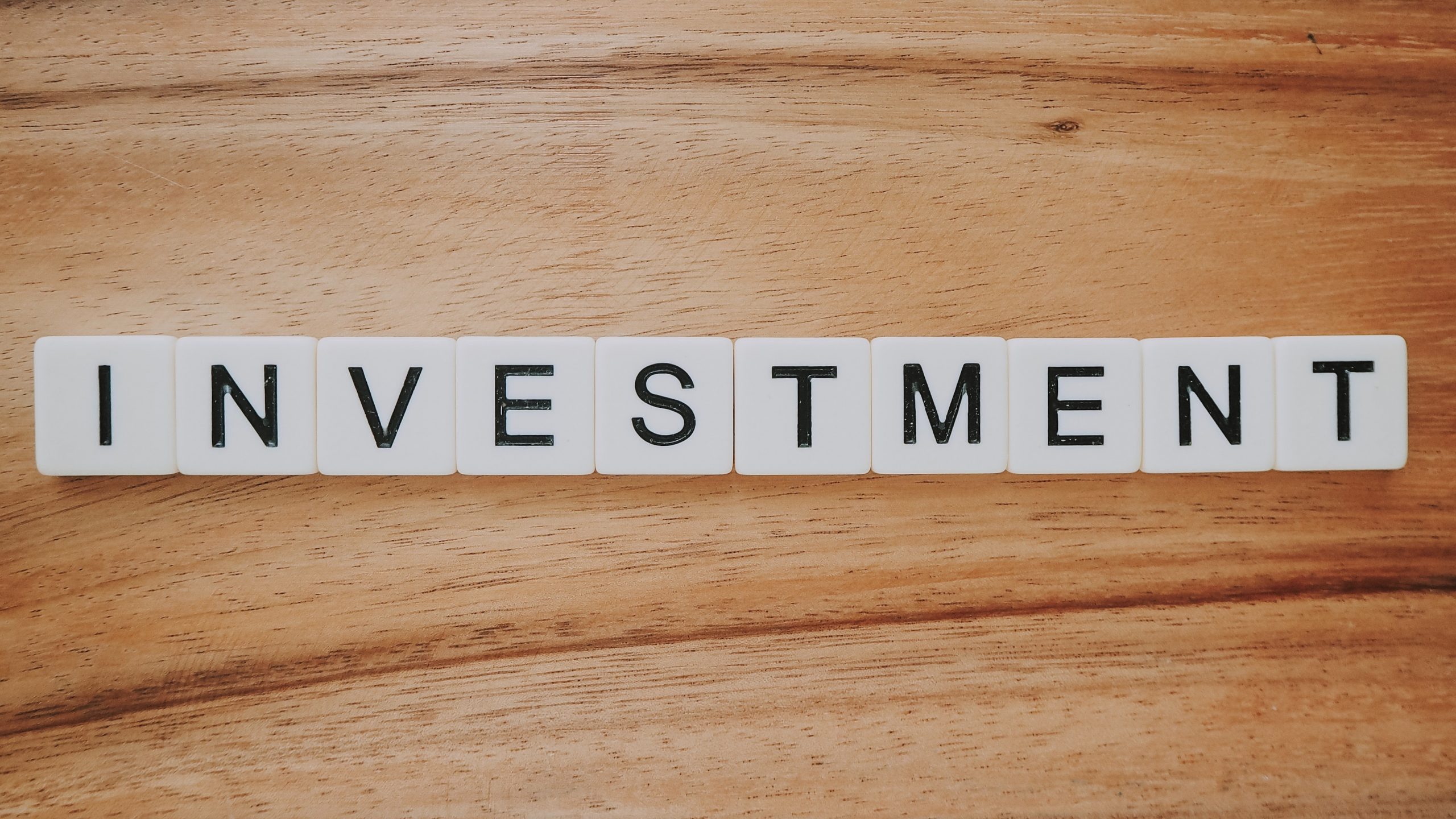It’s no secret that planning for retirement is daunting – especially when first starting out. You probably already realize that building up a sizable nest egg you can fall back on after retirement takes a long time – which is the advantage of investing early for retirement – you have time on your side. But, the reason so many people don’t start early enough is this: they don’t know which of the different types of investments for retirement is best for them!
With so many different retirement investment options to choose from, it’s easy to end up in “analysis paralysis” – and end up delaying the execution of your retirement plan. Fortunately, we’re here to help. In this in-depth article, you’ll learn all the various investment options for retirement planning. More importantly, we’ll help you pick the right ones based on your unique goals and financial situation.
First, let’s start with a quick discussion on why choosing the right types of investments for retirement is so important. Then, we’ll get into the root of today’s topic: breaking down all the different retirement investment options you have at your disposal. Of course, we’ll help you weigh the pros and cons of each, too.
Stay tuned to the very end, as we’ll unveil the #1 solution for retirement planning – foregoing the need for a financial advisor altogether. With one simple tool, you can effortlessly pick investments and feel confident preparing for a comfortable, lucrative retirement. You’re not going to want to miss out on this one!
Featured Courses:
The Importance of Choosing the Right Investment Options for Retirement
When most people think about retirement, the first thing that comes to mind is a golden-hued beach somewhere warm – sipping on a cold drink while reading their favorite book. And while that’s certainly one (perfect) way to spend retirement, the unfortunate reality is this: retired life isn’t always so idyllic. In fact, for many people, retirement can be pretty stressful – especially if they didn’t plan properly.
When you retire, you’re no longer receiving a regular paycheck from your employer. That means you have to start relying on your savings to cover all your living expenses – and if you don’t have enough saved up, you could find yourself in quite a bind. This is probably not news to you. But, we’ve found that many are unaware of just how much they need to have stashed away to live the life they want after retiring.
Think about it like this: you retire at 60, like most people. The current life expectancy here in the US is 78 years. But, if you take good care of yourself and have a bit of luck, you may see past 90. That means you need to assume at least 20-30 years’ worth of cash for retirement. As you calculate what your annual retirement life costs, you’ll start to get a bit overwhelmed…but you’re here reading this article, and that’s a great first step. The earlier you take control of your retirement planning, the less stressful the process is – you have time on your side.
In the section below, we’re going to share all the various retirement investment options you have at your disposal. Then, we’ll help you pick the right ones.
The Different Types of Investments for Retirement – With Pros and Cons of Each Option
When it comes to different types of investments for retirement, there are quite a few to choose from – which can be both good and bad. On the one hand, you have a ton of options to pick from – giving you the ability to tailor your retirement plan specific to your goals. But on the other hand, with so many different options available, it’s easy to get overwhelmed and make suboptimal choices.
Don’t worry – we’ll help clear things up below. We’ll discuss all the different types of investments for retirement in detail, along with the pros and cons of each option. By the end of this section, you should have a much better idea of how best to move forward with your retirement planning:
Retirement Savings Accounts:
There are different types of retirement investment accounts that people can have. The two most common are 401ks and IRAs.
A 401k is a type of savings account for retirement. You get to choose how much you save each month, and your employer may also match your contributions. An IRA is different in that it’s an account where you invest money for retirement. You can choose different types of investments, like stocks or bonds, and there is no limit to how much you can contribute. One common tactic we see couples utilize when planning for retirement is to have both a 401K and an IRA in the same household – helping get the best of both worlds. Here are the pros and cons of a basic retirement savings account:
– Pros: One of the biggest advantages of a retirement savings account is that they offer tax breaks. That means more of your money stays in your pocket, compound interest can do its thing, and you have a larger nest egg come retirement time.
– Cons: A downside to some retirement savings accounts is that you may get penalized if you withdraw funds before hitting retirement age – typically 59. Also, depending on which type of account you have, there may be limits on how much you’re able to contribute each year.
Stocks:
This is an obvious retirement investment option. When you buy stocks, you’re buying a piece of ownership in a company. If the company does well, the stock price will go up and you can make money. If the company doesn’t do so well, the stock price will go down and you’ll lose money.
And while techniques like swing trading or day trading are great ways to produce supplemental income in the here and now, the strategies for picking stocks for retirement are much different. You’re more concerned with the big picture of the company – and won’t spend your time monitoring charts and technical trading indicators all day. You can learn more about the differences between swing trading vs investing long-term in our blog. However, for now, here are some of the pros and cons of this investment option for retirement
– Pros: Stocks offer the potential for high returns. They also offer diversification – meaning if one sector is struggling, stocks in other sectors may be doing just fine.
– Cons: The biggest downside to stocks is that they’re regarded as volatile – meaning their prices can go up or down a lot in a short period of time. But, that’s mainly associated with a certain type of trading strategy – which doesn’t align with how you’d pick stocks for retirement. We’ll talk about how you can safely make stocks a part of your investing strategy for retirement later on.
Bonds:
Bonds are a type of loan. When you buy a bond, you’re lending money to a company or the government. In exchange, they agree to pay you back the principal plus interest over a set period of time.
Typically, bonds are seen as less risky than stocks – meaning there’s a lower chance that you’ll lose money. That’s because with bonds, you know exactly how much money you’ll get back and when you’ll get it. The downside is that bonds typically offer lower returns than stocks – making them less attractive for retirement planning. However, if stability is your main concern, then bonds may be the right investment option for you. Here are some pros and cons to consider of this retirement investment option:
– Pros: As we mentioned, bonds are less risky than stocks. They’re also a great way to diversify your portfolio and can offer stability in retirement.
– Cons: The biggest downside to bonds is that they typically offer lower returns than stocks. So if you’re looking to grow your money, you may want to consider other options. However, if you’re starting particularly early, these can be one of the safest investment options for retirement.
Commodities:
Commodities are physical goods like gold, silver, oil, wheat, corn, etc. You can trade commodities through futures contracts or ETFs. When you invest in commodities, you’re betting on the price of the underlying commodity going up or down.
Investing in commodities can be riskier than other types of investments – but it can also offer the potential for high returns. That’s why we recommend only investing a small portion of your retirement savings in commodities. Here are some pros and cons to consider before investing in commodities:
– Pros: Commodities offer the potential for high returns. They’re also a great way to diversify your portfolio and hedge against inflation.
– Cons: The biggest downside to commodities is that they’re volatile – although not quite as volatile as stocks. You’ll want to carefully monitor your commodity-based investments over the years to ensure you’re not watching your retirement account dwindle away.
Real Estate:
Real estate is another popular investment option for retirement. And frankly, it may be one of the absolute best. When you invest in real estate, you’re buying property – like an apartment building, an office complex, or a rental house. You can also invest in REITs, which are funds that own real estate.
There are a few different ways to make money with real estate. The first is through appreciation – meaning the value of your property goes up over time. The second is through cash flow – meaning you earn money each month from rent payments. And finally, there’s the potential for tax breaks – which we’ll discuss more later on. Here are some pros and cons to consider before investing in real estate:
– Pros: Real estate offers the potential for high returns through appreciation and cash flow. It’s also a great way to diversify your portfolio. It also may work as part of your inflating hedging strategy. Additionally, there are potential tax breaks that can make real estate an even more attractive investment.
– Cons: The biggest downside to real estate is that it’s an illiquid asset – meaning it’s hard to sell quickly if you need the money. Additionally, it can be expensive to buy property, and there are ongoing costs like maintenance and insurance. However, it doesn’t take much to live a life of retirement based solely on real estate investments. You’ll just have to start early to make it feasible.
So – Which of the Different Types of Investments Retirement Options is Best for You?
Now that we’ve discussed the different types of investments for retirement, let’s talk about how to choose the right ones for your unique goals and financial situation.
When it comes to retirement planning, there’s no one-size-fits-all solution. It depends on factors like your age, your risk tolerance, your time horizon, and your overall financial picture. Regardless, though, it’s always a good idea to diversify your retirement investments across the different options we discussed above. You should try to keep a nice balance of stocks, bonds, commodities, and real estate. Meanwhile, you should contribute to some type of retirement savings account – either an IRA or a 401K, depending on your situation.
Juggling all these investments can feel overwhelming. That’s why you may feel inclined to work with a financial advisor to create a retirement plan that’s tailored specifically for you. Here’s why we don’t recommend this approach…
Why You Don’t Need a Financial Investor to Help you Pick the Right Types of Investments for Retirement
In our experience, financial advisors aren’t worth it most of the time. We recently wrote an article discussing why you don’t need a financial advisor. But, the reasons can be summarized as this: They don’t deliver a good return compared to what you pay.
Their fees can be downright egregious and the returns they’ll help you earn are minimal. Moreover, you can do everything they do – all by yourself. They typically encourage you to dollar-cost your capital into different retirement funds, which doesn’t take a finance degree to do.
Thus, if you’re looking for a do-it-yourself solution, VectorVest can help.
How VectorVest Helps You Pick the Right Investment Options for Retirement
VectorVest is the world’s leading stock analysis software – and it can be an invaluable tool in your retirement planning. With VectorVest, you can pick the best retirement stocks or funds – bypassing the need for a financial advisor.
Our intuitive software for the stock market simplifies investing to help you feel more confident making investment decisions. Instead of analyzing hundreds of indicators or setting up different charts, you can just rely on three simple ratings: relative value, relative safety, and relative timing. Together, these make up the overall VST rating a stock is given. And from there, you get a clear buy, sell, or hold recommendation at any given time, for any given stock. How easy is that?
Well, it gets even easier. With our pre-built stock screeners, you can pull up our picks for the “best retirement stocks” at any given time – featuring some of the safest stocks with incredible long-term price appreciation potential.
By investing in a VectorVest subscription, you can set yourself up for a comfortable, lucrative lifestyle come retirement. You can even do it all from our mobile stock advisory app. But you need to start today – with each passing day you delay building your retirement account, it becomes more difficult – as you lose the compounding effects of time. So, don’t hesitate any longer!
Final Thoughts on the Different Types of Investment Options for Retirement
We hope this resource has provided you with clarity on the different types of investments for retirement. You now know all your retirement investment options, and you also have a better understanding of the pros and cons of each. Your retirement plan should consist of a diverse range of investments to ensure you don’t deal with the horror that comes from putting all your eggs in one basket – and having things not work out how you’d hoped.
With VectorVest, you can pick the best retirement stocks on autopilot. So, what are you waiting for? Learn more about how our tools work today with our free stock analysis software.
Featured Courses:
What you should do next…
- Get our latest blogs delivered right to your inbox, subscribe to our newsletter.
- The market moves fast! Get our most current evaluation of this stock with our FREE stock analysis tool.
- Looking for stock picks? Not sure if now is the right time to buy/sell? For a limited time, enjoy the full benefits of a 30-day subscription to VectorVest for only $0.99 (usually up to $148/month) . Get access to our full list of screeners showcasing our top stock picks that tell you exactly what to buy, when to buy, and when to sell.








Leave A Comment